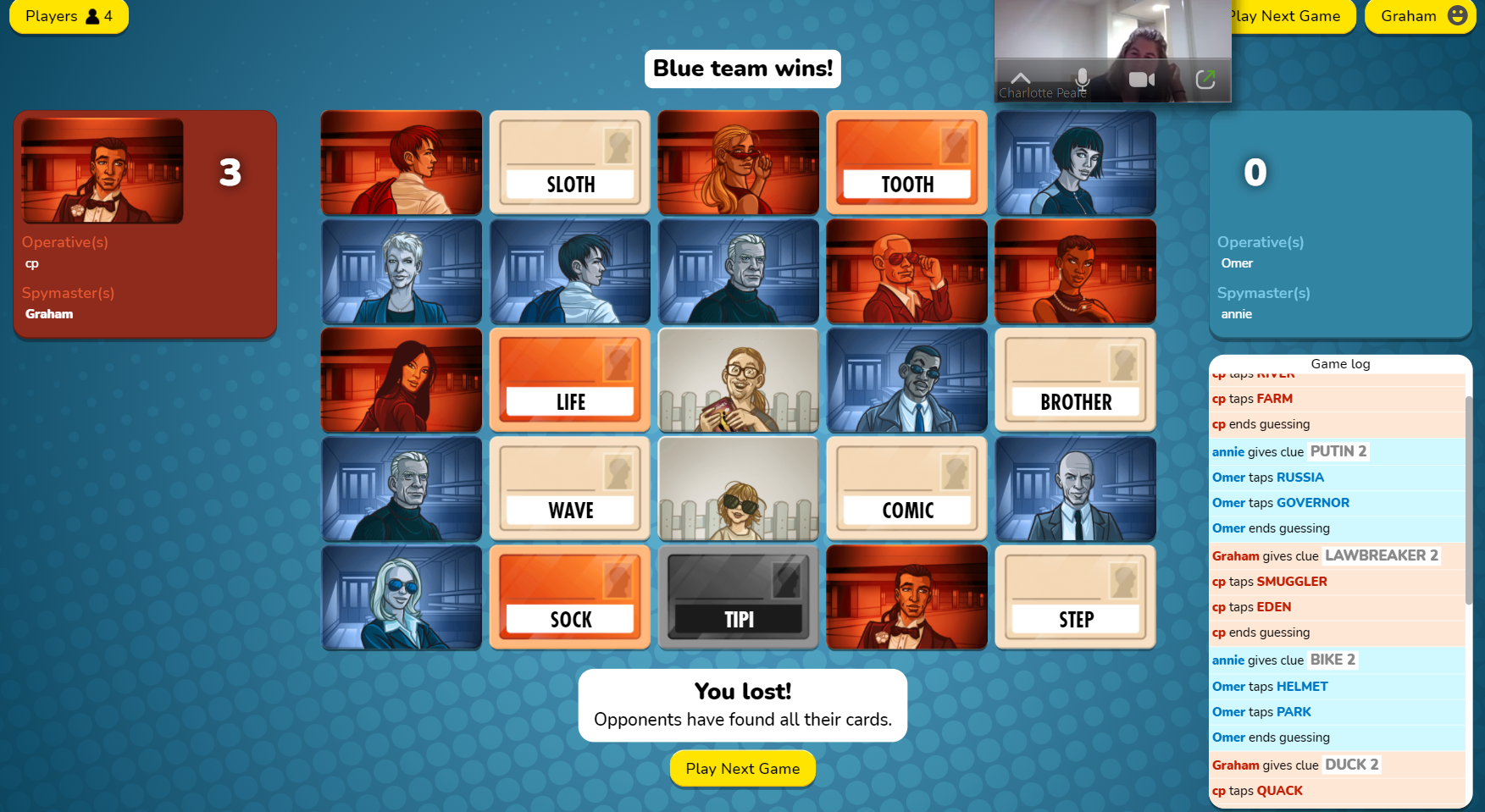I chose to play and analyze Codenames. Our game is very similar to Codenames, except we use faces instead of words for the “agents.” The players (4+) are split up into two teams with each team selecting a Spymaster. The other team members are field operatives. Spymasters sit on one side of the table across from their filed operative(s).
Each turn, one spymaster gives a one-word clue along with a number to indicate how many cards the clue applies to. If their field operative guesses correctly, their team covers that card with an agent card, and they can guess as many times as the number given following the clue. If a field operative guesses a card belonging to the other team, the other team covers that card with their agent card. If a field operative guesses the assassin card, the game is over and their team loses.
After playing Codenames twice, I learned that it promises two types of fun: fellowship and competition. Fellowships comes from working with your spymaster / field operatives to guess the secret agents. Competition comes from trying to beat the other team. I think that the decision to allow field operatives to guess as many times as the number following clue fosters competition. For example, at one point in a game, my team had only uncovered 3 secret agents while the other team had uncovered 5. My spymaster made a risky choice to catch up by saying “3” instead of the usual “1” after their clue. This meant I had the opportunity to uncover 3 secret agents. I ended up correctly guessing 2, and the game was suddenly tied. I noticed that as the competition increases, players are more willing to make riskier moves. However, the assassin cards kept the spymasters cautious when choosing their clues.
I think Codenames made some good graphic design decisions that I hope to incorporate into my group’s game. I appreciated how the codename cards had the codenames printed twice so that both the field operatives and spymasters could read them. I think this was a simple, yet important, choice for the game to run more seamlessly. I also liked how secret agent cards were used to denote correct guesses. The characters on each card looked like they would be secret agents, so they reminded us of the game theme. Without these cards and the spy narrative, the game becomes an associative word game. My group has struggled with picking a theme and a narrative that integrates into the game. I think that if we choose to have a game, we should follow Codename’s example and integrate it into the game in a way that does not affect the mechanics.



